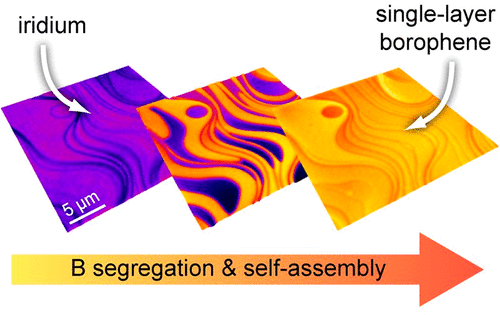The team led by UDE’s Prof. Michael Horn-von Hoegen
aims at producing the thinnest possible layer of boron, so-called
borophene, since it promises properties that could enable the
construction of two-dimensional transistors. The molecular beam
epitaxy used for this purpose until now results in domains that are
far too small. For more precise investigations and for use in
technology, however, larger areas are needed.
Synthesis of large-area 2D material: Atomic layer pushes
surface steps away



